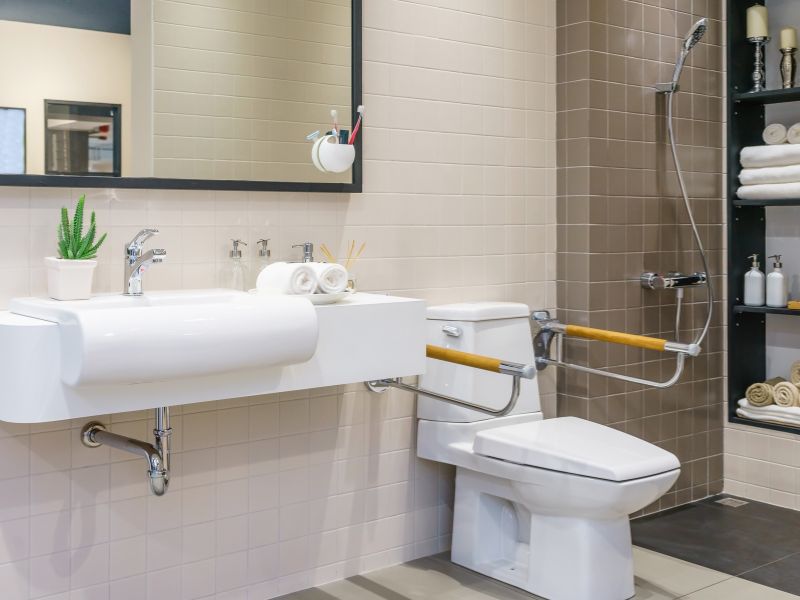
The concept of “aging in place” has gained significant attention. Many individuals aspire to live independently in their homes for as long as possible. To achieve this goal, incorporating universal design principles in home construction becomes crucial. Universal design is about creating spaces that are accessible and functional for people of all ages and abilities. Let’s look at the key principles and considerations for building a home that promotes aging in place.
Entryway Accessibility: Start with the entrance. Ensure that the entryway is step-free and wide enough to accommodate mobility aids such as wheelchairs or walkers. Consider installing lever-style door handles for ease of use.
Single-Floor Living: A single-story layout eliminates the need for stairs, making it easier for individuals with mobility challenges to navigate the home. If multiple floors are unavoidable, include a space for a future elevator installation.
Open Floor Plans: Open layouts enhance accessibility by providing ample space for movement. Minimize narrow hallways and doorways, opting for wider passages that accommodate mobility devices comfortably.
Bathroom Design: Bathrooms are often challenging spaces for those with limited mobility. Design with features such as roll-in showers, grab bars, and comfort-height toilets. Non-slip flooring is essential to prevent accidents.
Kitchen Adaptations: Design the kitchen with a focus on accessibility. Lower countertops, easily accessible storage, and lever-handled faucets are examples of features that enhance usability for individuals with different abilities.
Adaptable Lighting: Incorporate well-lit spaces with ample natural light. Consider installing smart lighting systems that can be easily controlled to adapt to different needs and preferences.
Non-Slip Flooring: Choose flooring materials that are slip-resistant and easy to clean. This is especially important in high-traffic areas and spaces prone to moisture, such as bathrooms and kitchens.
Technology Integration: Embrace smart home technologies that enhance safety and convenience. Automated lighting, thermostats, and security systems can be controlled remotely, providing peace of mind for both occupants and their caregivers.
Reachable Controls and Outlets: Install electrical outlets, light switches, and thermostats at reachable heights to accommodate individuals in wheelchairs or with limited reach. Consider touch-sensitive or voice-activated controls for added convenience.
Outdoor Accessibility: Extend universal design principles to outdoor spaces. Create smooth pathways, ramps, and well-lit exteriors to ensure safe access to gardens, porches, and other outdoor areas.
Building a home with universal design principles for aging in place is an investment in both present and future well-being. By prioritizing accessibility, comfort, and safety, homeowners can enjoy the benefits of an inclusive and adaptable living space. Whether planning for your own future or that of a loved one, embracing universal design is a thoughtful and forward-looking approach to home construction.



